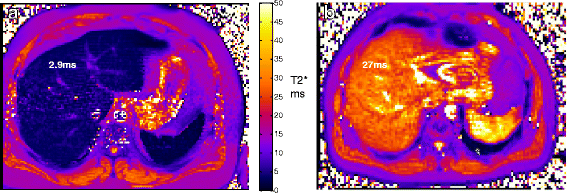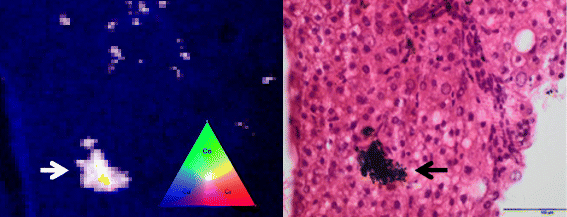Detection of metallic cobalt and chromium liver deposition following failed hip replacement using T2* and R2 magnetic resonance
- PMID: 27153940
- PMCID: PMC4859963
- DOI: 10.1186/s12968-016-0248-z
Detection of metallic cobalt and chromium liver deposition following failed hip replacement using T2* and R2 magnetic resonance
Abstract
Background: Failed hip prostheses can cause elevated circulating cobalt and chromium levels, with rare reports of fatal systemic organ deposition, including cobalt cardiomyopathy. Although blood cobalt and chromium levels are easily measured, organ deposition is difficult to detect without invasive biopsy. The T2* magnetic resonance (MR) method is used to quantify tissue iron deposition, and plays an important role in the management of iron-loading conditions. Cobalt and chromium, like iron, also affect magnetism and are proposed MR contrast agents.
Case presentation: We describe a case of a 44-year-old male with a failed hip implant and very elevated blood cobalt and chromium levels. Despite normal cardiac MR findings, liver T2* and R2 values were abnormal, triggering tissue biopsy. Liver tissue analysis, including X-ray fluorescence, demonstrated heavy elemental cobalt and chromium deposition in macrophages, and no detectable iron.
Conclusions: Our case demonstrates T2* and R2 quantification of liver metal deposition in a patient with a failed hip implant. Further work is needed to investigate the role of T2* and R2 MR in the detection of metal deposition from metal on metal hip prostheses.
Keywords: Chromium; Cobalt; MRI; Metal loading; Metal-on-metal hip; T2*.
Figures


References
-
- U.S. Food and Drug Admininstration. FDA advice on Metal Hip Implants. 2015. http://www.fda.gov/medicaldevices/productsandmedicalprocedures/implantsa.... Dec 2015.
Publication types
MeSH terms
Substances
Grants and funding
LinkOut - more resources
Full Text Sources
Other Literature Sources
Medical

